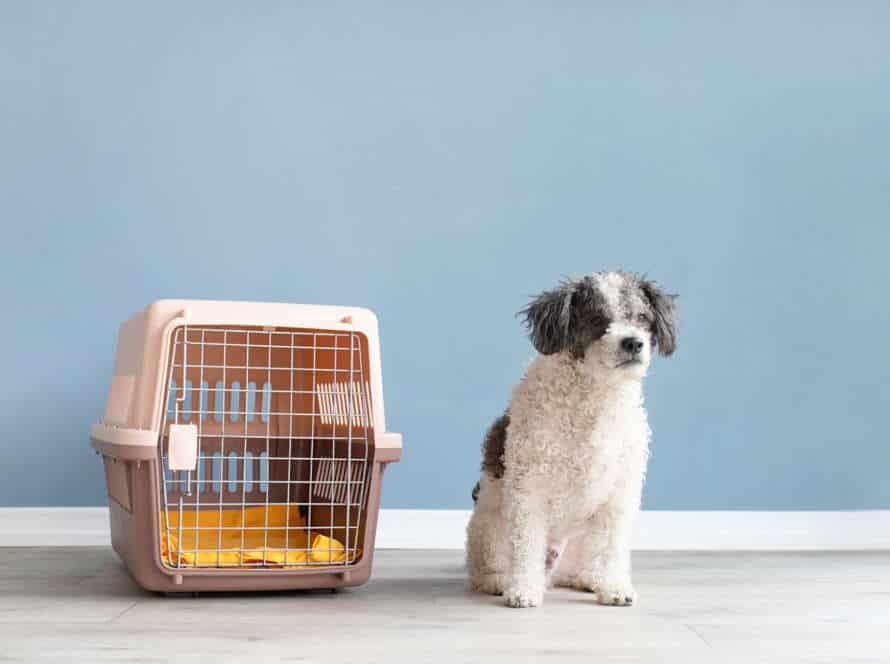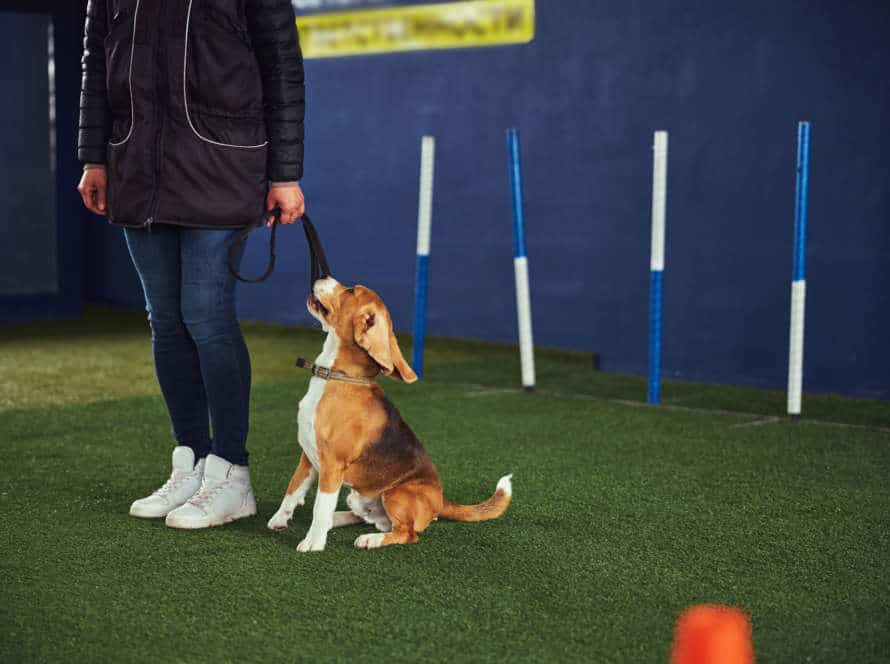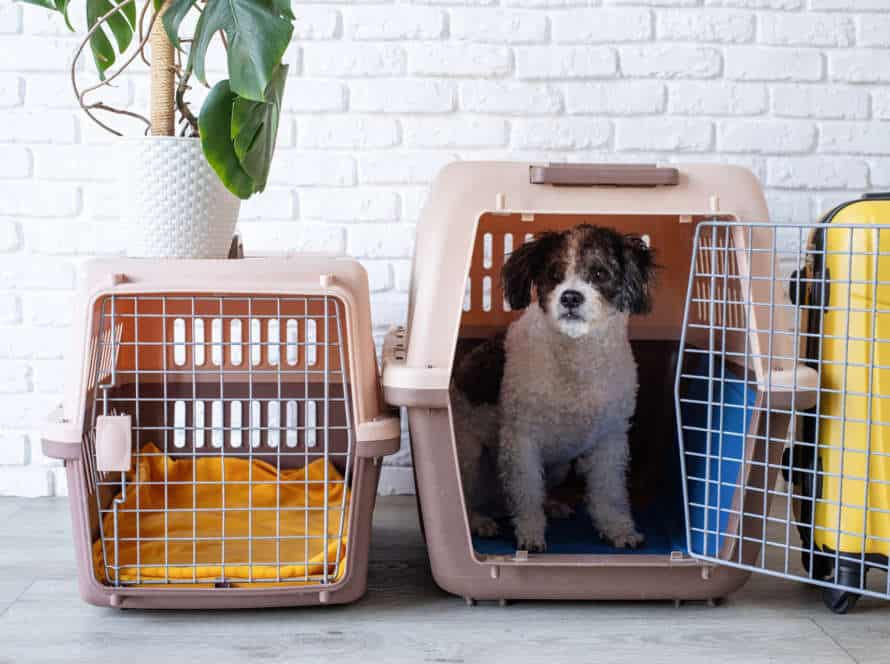The Importance of Consistent Training for Preventing Marking and House Soiling
Consistent training is a must to stop marking and house soiling in your pets. Otherwise, your pet could develop a habit of marking their territory and going potty inside the house. Training them young is easier than breaking an old pet’s bad behavior.
Here are some key points to remember:
- Be consistent with training and reward good behaviour.
- Watch their behaviour closely and intervene if you see signs of marking or house soiling.
- Use positive reinforcement techniques, not punishment-based methods.
- Give your pet plenty of chances to go outside and have easy access to the outdoors.
Plus, consistent training not only prevents bad behavior, but also strengthens the bond between you and your pet!
Understanding the Importance of Consistent Training
Consistent training is essential for avoiding marking and house messes by cats and dogs. It forges a bond between the owner and pet, making sure the pet knows the home’s rules and standards. Training your pet can make them better behaved, and make sure they stick to your expectations. So, let’s get into why regular training is key for preventing marking and house soiling.
Establishing a Regular Training Routine
A regular training routine is essential to keep your dog behaving well and to stop them from peeing and pooping in the house.
Training helps your pup create a routine, making their behavior easier to control. Plus, it builds trust and strengthens your bond.
Here are some tips for establishing a regular routine:
- Start with basic commands like ‘sit’, ‘stay’, and ‘come’, and practice them every day.
- Use treats, compliments, and playtime to reward good behavior.
- Keep training sessions short and frequent, no more than 15 minutes. Don’t train when your dog is tired or distracted.
- Consistency is key. Be patient and persistent. Make training an enjoyable experience for both of you!
Getting to Know Your Pet’s Training Needs
Understanding your pet’s training needs is essential for a healthy and blissful relationship. Consistent training is the key to prevent marking and house soiling; two common pet issues that could lead to an unhealthy living condition.
As soon as you bring your pet home, commence training. Establish a routine, instruct obedience, and avoid any negative reinforcement. These are fundamental for forming positive habits and long-lasting effects.
Figure out what kind of training your pet requires; such as basic obedience, house manners, or socialization. Each pet is one of a kind, so they will have different needs and learning chances. To train your pet effectively, praise and reward good behavior, and be patient when correcting unwanted behavior.
Remember, consistent training builds trust, boosts communication, and strengthens the bond with your pet. Have it as a daily practice, and you will have a well-behaved, loving, and joyful furry friend.
Pro tip: Make training as enjoyable as possible by involving fun activities, treats, and playtime to keep your pet captivated and amused.
The Role of Positive Reinforcement in Training
Positive reinforcement is a must when it comes to training your pets. It’s especially useful in preventing marking and house soiling.
Consistent training, combined with positive reinforcement techniques, can help guide your pet’s behavior in the right direction. Rather than punishing them, reward your pet with treats or praise when they do something you want. This will encourage them to repeat the behavior and make them more willing to listen and learn.
Also, repeat training is beneficial for pets. It helps them understand what’s expected of them and reinforces good habits. This way, you’ll have well-behaved, trained pets.
Identifying Marking and House Soiling Behaviors
Cats communicate in various ways, such as scent-marking. Urine and faecal marking are the two most common ones. Inappropriate marking and house soiling can be signs of a behavioural problem. To stop this, we need to identify the cause. Consistent and proper training is the best way to prevent or reduce marking and house soiling.
Understanding the Reasons for Marking Behavior
Marking is a natural instinct for male and female dogs. It’s a communication tool and also helps them to mark their territory. To prevent house soiling and recurring marking, it’s important to understand why they do it.
Reasons why dogs mark:
- Territorial marking – Dogs leave their scent on vertical surfaces, to tell other dogs that this is their space.
- Sexual marking – Male dogs tend to mark more than female dogs. They leave their scent, to attract mates.
- Medical issues – Urinary tract infections, bladder stones, etc., can lead to more frequent marking.
- Anxiety or stress – Dogs may mark in response to fear, anxiety or stress. Training is the key to prevent this behavior.
Causes of House Soiling in Pets
House soiling is a common pet problem. Many causes can exist. Training your pet regularly and knowing the signs can stop this issue.
Reasons for house soiling include:
- Medical troubles like UTIs or digestion issues.
- Being alone causes Separation Anxiety which leads to soiling.
- Unneutered pets may mark their territory.
- Improper training that doesn’t teach right and wrong.
Prevent house soiling. Train your pet. Reward good behavior. Correct bad behavior.
Recognizing the Signs of Marking and House Soiling
Marking and house soiling are two common issues for pets, especially dogs and cats. Knowing the signs is key to resolving it and restoring peace. Marking is when an animal pees on things to show it owns that place or to attract a mate. House soiling is when they pee or poop in the wrong spots, like inside the house.
Signs of these problems are:
- Frequent peeing or pooping
- Bad smells
- Changes in environment or routine
- Anxiety in the pet
Training your pet often is key to avoiding these behaviors from becoming habits. Positive reinforcement is good for making them behave, but negative reinforcement can ruin the relationship between you and your pet.
Preventing Marking and House Soiling through Consistent Training
Consistent training is vital for curbing marking and house soiling in pets. It can help them comprehend what behavior is acceptable and unacceptable. And, it should be based on positive reinforcement and rewards. Regular training will teach your pet the rules and they’re more likely to obey them. Now let’s explore why consistent training is so essential for preventing marking and house soiling.
Crate Training and Confinement for Dogs
Crate training & confinement is an effective way to cease marking & house soiling — if done consistently. Here’re some tips for you:
- Pick the correct size crate. It needs to be big enough for your pup to stand, turn around, and lie down with ease.
- Gradually introduce the crate. Put treats & toys inside; encourage your dog to go in voluntarily. Increase duration gradually.
- Don’t use the crate as punishment. It’s supposed to be a comfy & safe spot, not a place of isolation.
- Make a routine. Feed, walk, & crate at the same time everyday.
- Supervise your pup. When they’re out of the crate, watch them closely to avoid marking & soiling.
Consistent training is essential to avoiding these issues. Be patient & consistent with your techniques for the best outcomes!
Litter Box Training for Cats
Training your kitty to use the litter box is essential to keep your home clean. Here are some tips:
- Choose a large, open litter box.
- Put it in a quiet, accessible spot.
- Show your cat where the litter box is and encourage them to use it.
- Reward your kitty with treats and positive words when they do use it.
- Clean the litter box regularly and switch out the litter every few weeks.
Consistent training is the key for good litter box habits and to stop marking and soiling. Be patient, stay consistent, and praise your cat for their good behaviour.
Consistent Supervision and Management Techniques
Consistent supervision and management are necessary to avoid marking and house soiling in dogs. Guidance and clear boundaries are needed for them to understand what’s expected. Here are some tips:
- Create a consistent daily routine, with regular meals, walks, and playtime.
- Use positive reinforcement to reward good behavior and discourage bad behavior.
- Closely supervise your dog, especially when in new situations or feeling anxious or stressed.
- Use a crate or baby gate to limit access to areas where they may mark or soil.
- Be sure all family members use the same commands, so your pet isn’t confused.
Pro tip: Be patient. Training may take time. With consistent training and positive reinforcement, you can help prevent marking and house soiling.
Addressing Marking and House Soiling Issues with Positive Training Techniques
Train your pet – it’s key for being a good pet parent! It’s important to keep reinforcing good behaviors, like not marking or pooping in the house. Here’s a few tips for training to help with these problems:
Positive Reinforcement Training Methods for Dogs
Positive reinforcement training is an effective and humane way to address marking and house soiling issues. It relies on rewards and praise, instead of harsh punishment, to encourage good behaviour. This strengthens the bond between dog and owner.
Here are a few tips to stop your dog from marking and soiling:
- Create a regular routine for feeding, playtime and potty breaks.
- Reward your dog with praise and treats for going outside to use the bathroom.
- Give your dog a verbal command, like “outside” or “potty,” when it’s time to go.
- Keep your dog’s living area clean with pet-safe products.
With consistent positive reinforcement, your pup can learn to follow commands, avoid bad habits and have a happy life with you!
Correcting Marking and House Soiling Behaviors in Cats
Tackling Marking & House soiling Issues with Positive Training Techniques:
Positive reinforcement is a great way to address marking & house soiling in cats. Here’s how:
- Clean soiled areas completely, removing any odors or residue.
- Provide plenty of litter boxes in easy-to-reach places.
- Reward your cat for using the litter box with treats & praise.
- Divert unwanted scratching & marking by providing appropriate scratching surfaces & deterrent sprays/tapes.
- Use positive reinforcement to encourage desired behaviors such as using the litter box & scratching designated surfaces.
Importance of Consistent Training for Preventing Marking & House Soiling:
Consistency is key for training cats out of these behaviors. Here’s what else to do:
- Stick to a regular feeding & cleaning schedule.
- Provide lots of play & exercise opportunities to reduce stress.
- Keep the litter box clean & easily accessible.
- Consider using pheromone sprays or diffusers to reduce stress.
- Seek advice from a vet or animal behaviorist if your cat’s behaviors persist.
Pro Tip: Punishment-based training techniques are ineffective & can damage your relationship with your cat. Focus on positive reinforcement & consistency in your training.
Addressing Marking and House Soiling in Multi-Pet Households
Marking and house soiling in multi-pet households happen a lot. However, with some positive training and consistency, you can solve it! Here are some tips:
- Figure out why the pet is marking or soiling; it could be stress, anxiety, wanting to claim territory, or medical issues.
- Make sure all pets get enough resources – food, water, litter boxes, toys.
- Use positive reinforcement to encourage good behavior – give rewards if they use their litter box or stay in their area.
- Clean up with enzymatic cleaners or odor neutralizers to get rid of any lingering scents that may lead to repeat behavior.
Consistent training is the key to preventing future incidents. With a bit of patience and positive reinforcement, you can make sure your multi-pet household is happy and healthy!
Pro tip: If the behavior persists, get help from a professional – they may spot something that needs to be addressed.
Seeking Additional Support for Complex Marking and House Soiling Issues
Consistent training is the top way to stop marking and house soiling problems. Train your pup regularly and use positive reinforcement. This builds a better bond and helps shape the behaviour you want. But, if your pup has complex marking or house soiling issues, you may need extra help. Seek support!
When to Seek Professional Help for Marking and House Soiling Behaviors
When pet owners face marking and house soiling behaviors that don’t respond to home training, it’s time for professional help.
If your pet keeps misbehaving despite your efforts, talk to a vet or animal behaviorist. They can check if a medical problem is causing it. And they can help you with specialized training techniques.
Signs that show you need professional help:
- Marking or soiling more than usual.
- Worsening behavior, despite consistent training.
- Marking or soiling getting aggressive or destructive.
Consistent training is important to prevent these problems. Make sure your pet has a regular routine, enough exercise, and positive reinforcement for good behavior.
Addressing Medical Issues Related to Marking and House Soiling
Marking and house soiling issues in pets can have various medical causes. Common ones are urinary tract infections, bladder stones, and kidney disease. A medical exam and testing can help find the cause.
In addition, training and behavior change are key. This includes regular elimination times, rewarding good behavior, and reducing stress. If the issue is complex, a certified animal behaviorist or vet may be needed.
Pro tip: Have a consistent elimination routine and reward your pet for good behavior to prevent marking and soiling.
Special Considerations for Rescued or Adopted Pets with Marking and House Soiling Issues
Rescued or adopted pets may have marking and house soiling issues. These can be tricky and need extra support and regular training. Here are some things to bear in mind:
- These problems may be because of anxiety, bad experiences, or not being in a familiar place. It can take time to sort them out.
- A professional trainer or behaviorist can be useful for complex issues.
- Consistent teaching and positive reinforcement can stop these issues happening again. This could include crate training, reward-based obedience training, and having a routine for eating, playing, and going to the toilet.
- Be patient with your pet and give them a safe and comfy place to adjust and flourish.
- Pro Tip: If your pet has serious marking or house soiling problems, check with a vet in case there is an underlying medical condition.
Frequently Asked Questions
Q: Why is consistent training important for preventing marking and house soiling in pets?
A: Consistent training establishes boundaries and expectations for pets, helping to reduce the likelihood of marking and house soiling behaviors.
Q: How often should I train my pet to prevent marking and house soiling?
A: Regular and consistent training is recommended, ideally on a daily basis. This helps to reinforce good behaviors and discourage bad ones.
Q: What are some effective training methods for preventing marking and house soiling in pets?
A: Positive reinforcement such as treats and praise can be effective training tools. Consistency with commands and boundaries is also important. Additionally, providing plenty of opportunities for exercise and mental stimulation can reduce the likelihood of marking and house soiling behaviors.
Q: What should I do if my pet continues to mark or soil in the house despite consistent training?
A: It may be helpful to consult with a professional trainer or animal behaviorist to identify the root cause of the behavior and develop a targeted training plan. Medical issues should also be ruled out.
Q: Can I train an older pet to stop marking or soiling in the house?
A: Yes, it is possible to train an older pet with consistent training and patience. However, it may take longer than training a younger pet, and medical issues should be ruled out as a possible cause.
Q: What role do regular vet checkups play in preventing marking and house soiling in pets?
A: Regular vet checkups can help identify and address any medical issues that may contribute to marking and house soiling behaviors. Additionally, veterinarians can provide guidance on training and behavior modification strategies.







